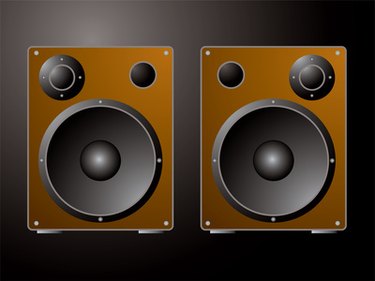
Performers sometimes struggle to hear the true sound of the main audio speakers while they are on stage due to reverb and the general acoustics of the room or hall. Stage monitors get around this problem by connecting to the same sound mixer as the audience speakers so the singer and other band members can monitor levels throughout the performance.
Step 1
Plug in a cable into the AUX outputs on the sound mixer. Typically the AUX jacks require quarter-inch plugs. The AUX channels are separate from the main mix on the sound board and allow you to mix the sounds to match what the band needs. The number of AUX channels required depends on the number of different mixes. You'll usually need at least two because the vocalists will want a different mix to the instrumentalists.
Video of the Day
Step 2
Insert the other end of the cable into the amplifier. Skip this step if you use powered speakers. Most amplifiers have two channels. The number of channels needed depends on the number of mixes.
Step 3
Run a line from the amplifier to the speaker. Depending on the speaker, it may need either an XLR plug, a quarter-inch plug or an easy-lock connector. Stick with the same output from the amplifier or sound mixer, which should be a quarter-inch plug or easy-lock connector.
Step 4
Run amplifier and speaker tests. Mix the different channels by using the proper AUX dial for each input. You will need to set every AUX line for all the inputs so that the mix is setup the way the vocalists and instrumentalists prefer.
Video of the Day